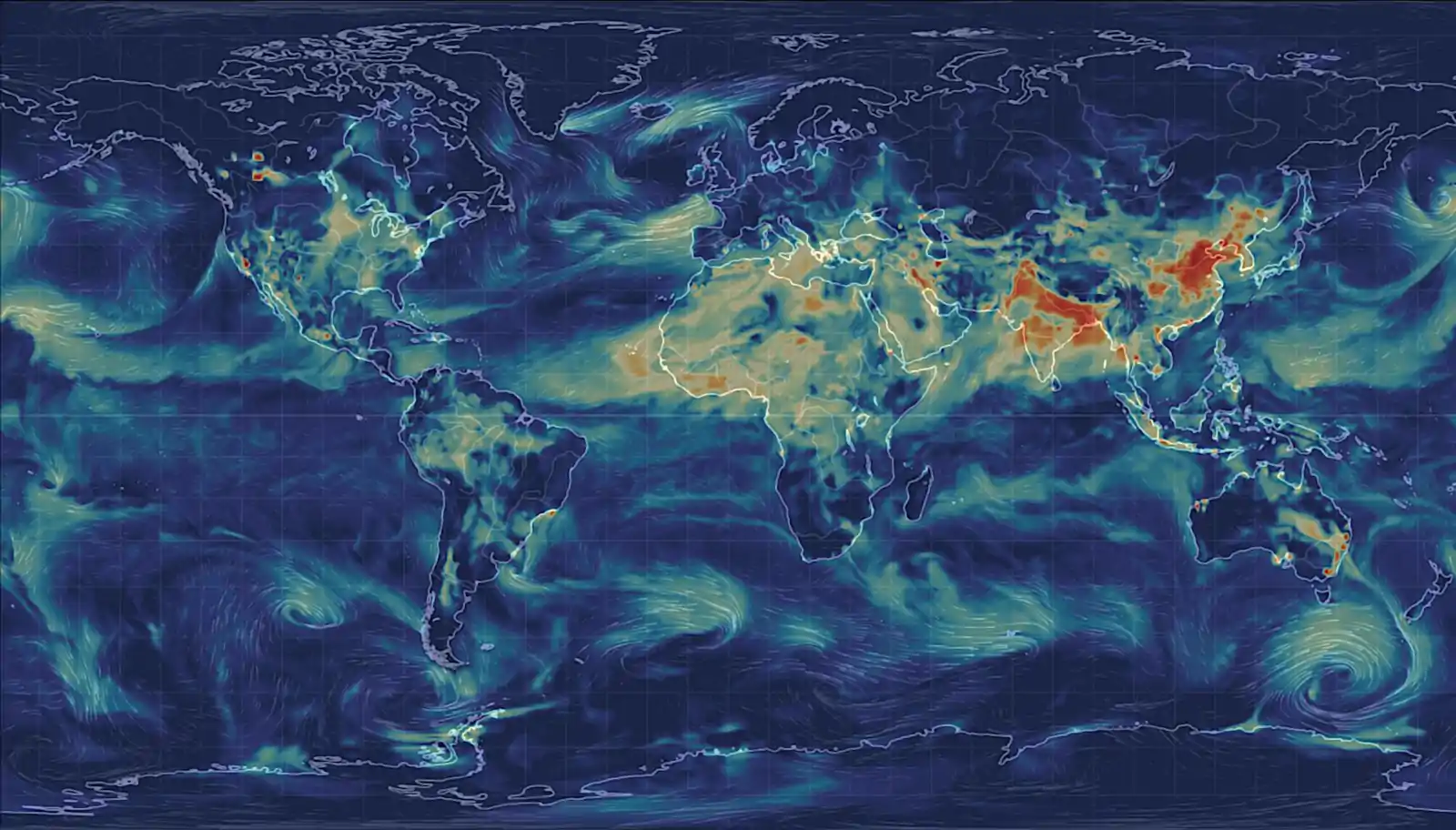Air pollution
For a new century in which inhaling gets only more dangerous
January 17, 2019 — April 6, 2024
Suspiciously similar content
1 Effects of air quality
We know that air pollution gradually kills you upon chronic exposure. Turns out that some studies argue for an acute effect upon mental acuity. See The importance of clean air in classrooms—during the pandemic and beyond (Ebenstein, Lavy, and Roth 2016; Gilraine and Duque n.d.; Heissel, Persico, and Simon 2020; Künn, Palacios, and Pestel 2019; Marcotte 2017).
I do not understand what mechanism could produce so powerful an effect, and I am surprised how little effort is spent on mechanisms. Ham, Zweig, and Avol (2011) propose
Pollution can affect academic performance by way of three mechanisms: (i) school absenteeism due >to illness caused by pollution; (ii) attention problems in school due to illness caused by pollution; (iii) >fatigue when doing homework due to illness caused by pollution, and (iv) a direct negative effect of >pollution on brain development.
That still feels a little coarse to me. Block and Calderón-Garcidueñas (2009) argues for some kind of inflammation effect.
Andrew Gelman points out that one of the foundational studies is weak: No, I don’t think that this study offers good evidence that installing air filters in classrooms has surprisingly large educational benefits. Alex Tabarrok attempts to track down whether the literature shows signs of questionable research practices in Why the New Pollution Literature is Credible, and he also links to David Wallace-Wells · Ten Million a Year: Dying to Breathe. Doesn’t look like a slam dunk.
2 Indoor air quality
2.1 Humidifiers
2.2 Natural gas cooking
Apparently not great. Also, not the worst thing ever. This indeterminate degree of badness puts gas stoves in the category of things people will argue about too much.
- A plausible estimate is that gas stoves decrease life expectancy by 53 days on average
More stuff:
- Gas Stoves Are Bad for You, and for the Environment
- Gas stove cooking routinely generates unsafe levels of indoor air pollution
- RMI, Gas Stoves: Health and Air Quality Impacts and Solutions
- There’s a battle over your gas stove, climate change and health : NPR
- Experts are sounding the alarm about the dangers of gas stoves
2.3 Air purifiers
Side question: can air purifiers help with COVID:
3 Outdoor air quality
AQICN estimates of city air badness in terms of “AQI”.
Another interesting source is the visualiser by nullschool.net which creates beautiful global maps. Possibly more beautiful than useful?
Purpleair.net has straight up sensor data for many locations in the world and gives you Air Quality Index values.
But what do these AQI figures mean? AQI to Cigarettes will convert Air Quality Index to number of cigarettes smoked. AQI Calculator offers conversion between various measures in terms of AQI /health impact.
4 Anti pollution masks
For my morning commute through heavy industrial districts and bushfires, I want a mask to keep smoke/dust out of my lungs, since I have reason to be worried about the PM2.5 levels in Sydney air, a.k.a. microscopic-dust-that-gives-you-cancer, which I have no reason to believe are safe or even competently monitored and which I am likely exposed to as a cyclist commuting through construction sites. Or, after the notorious 2019 Australian bushfire season, by simply breathing anywhere.
But which mask? Firstly, I don’t want some thin medical mask, I want real filters to remove harmful particulates from the air etc. So, an industrial one?
Side question: Do any of these masks have hygiene benefits also?
4.1 Cheap industrial masks
Myhealth Beijing summarises the mask selection, crystallized upon the needs of Beijing’s extreme case.
3M definitely was a consistent performer in almost any category, and certainly >remains my personal gold standard for masks. Another standout is the MASKin >brand, which was just as solid as 3M in all three reports. […] ] > >Another “winner” seems to be masks with exhalation valves, which usually >performed well with filtration but especially in the other categories with >improved resistance and decreased leakage. For what it’s worth, my current >personal favourite mask is the disposable, foldable 3M 9001V which I grab from >my local 7-Eleven. […] > >All three reports still didn’t test most of those most commonly used reusable >masks in the expat community, […], since I am a data geek and this is a >HONCode-certified evidence-based blog, it’s now a bit difficult to really >recommend any of those commercial, reusable brands at this time as a first >choice.
NB the 3M 9001V is only “P1” rated in Australia, which is not the P2 (which I think is the N95) gold standard for carcinogen avoidance.
There are various local vendors, e.g. PPEtech sells locally made disposable ones for under AUD2.
4.2 Hipster masks
The reusable/fashion masks are a bit less awkward and (probably?) produce less landfill waste. But do they work?
Respro have too many options; I get confused. They are wildly expensive, but garner cycling hipster approval for the ultralight. It’s unclear how this comfort and convenience rating relates to effectiveness. In Australia MEDCART offers replacements.
Vogmask and Cambridge masks look nice, but do they actually stop particles? The latter two seem to fit loosely, much looser than would plausibly, to my inexpert mind, stop pollution getting in my lungs. For all of these the real approval I want is independent lab testing of their goodness, which AFAICT is not available. I wish it were, because the disposable masks are not ideal for cycling, and they are not easy to get in Sydney so maintaining a stockpile of them is tedious.
4.3 Medical/anti-COVID-19 masks
See hygienic masks.


